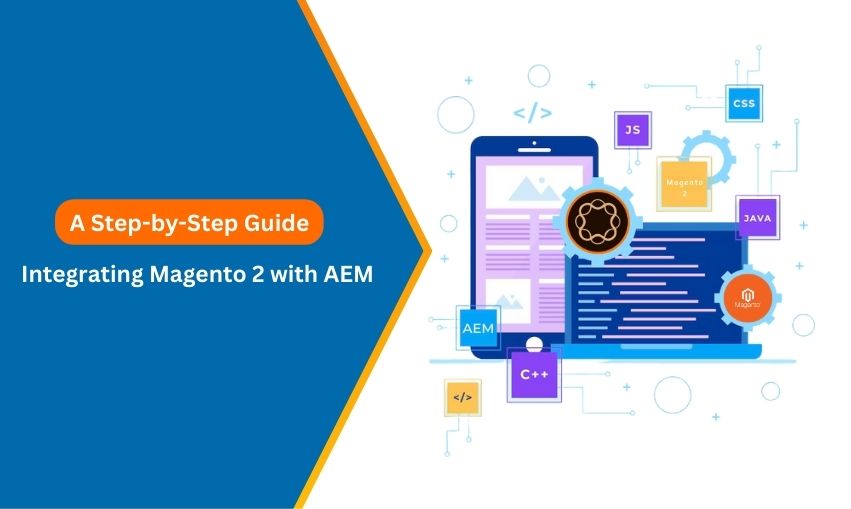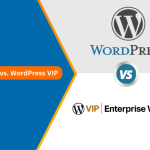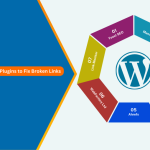Today’s digital environment emphasizes unimpeded and stimulating customer involvement. Businesses with sophisticated e-commerce needs and the desire for exciting content encounters should considerMagento SEO expert combining Magento 2 (now Adobe Commerce) with Adobe Experience Manager (AEM).
This is not just a fad but a well-thought-out move. A recent study revealed that companies utilizing integrated platforms like Magento 2 and AEM see an average increase of 20% in conversion rates. This impressive figure alone testifies to the power of the unified customer journey, where content blends seamlessly into commerce.
This extensive guide will help you understand the benefits, approaches, and steps in successfully integrating Magento 2 with AEM. It provides useful insights whether you evaluate your technology stack as a business leader or seek technical guidance as a developer for this potent integration.
What is Meant by Magento?
Adobe Commerce, previously known as Magento, is a widely used open-source e-commerce platform that can be customized according to size, scalability, flexibility, and features it should have. It enables businesses to create managed online stores, comprehensive product catalogs, transactions processed securely, and other e-commerce capabilities.

See How Our Experts Can Drive More Traffic to Your Website!
SEO: Boost your rankings and drive more organic traffic today!
Website Design/Development: Create a stunning website that converts visitors into customers.
Paid Media: Reach the right audience at the right time with expertly managed paid media.
What is Meant by Adobe Experience Manager (AEM)?
Adobe Experience Manager (AEM) is an all-inclusive web content management system designed specifically for superior customer interactions across different channels. It helps with content creation, digital asset management, personalization, analytics, etc.
Why Should You Integrate Magento 2 with AEM?
Before we delve deep into the technicalities, let us look at some of these reasons why it could be beneficial for your company to join forces between Magento 2 and AEM:
- Unified Customer Experience: Combine the powerful e-commerce capabilities provided by Magento 2 with rich content functionality available from AEM to form a seamless brand experience. Have personal content delivered through tailored recommendations on products made available under one consistent branding message across all touchpoints.
- Streamlined Content Management: Manage your product catalogs, marketing assets, and web content from a central point. In doing so, you will avoid the need for disparate systems, eliminate data silos and make your marketing team more effective.
- Enhanced Personalization: Use AEM’s robust personalization engine to provide targeted content and product suggestions based on customer behavior, purchase history, and preferences. This level of personalization can significantly boost conversion rates and customer loyalty.
- Improved SEO Performance: By using AEM’s SEO tools combined with Magento 2’s e-commerce capabilities, you can optimize your website for search engines. This will enhance organic visibility, increase traffic, and widen reach. Consider collaborating with a specialized Magento SEO expert to improve your SEO strategy further.
- Accelerated Time-to-Market: This integration streamlines content creation, product launches, and marketing campaigns between the platforms. Introduce new products faster or launch promotional deals to capitalize on market opportunities.
How Can You Choose the Right Integration Approach?
There are two primary approaches for integrating Magento 2 and AEM, each with its advantages:
AEM as a Content-as-a-Service (CaaS) Provider:
- In this case, AEM is a centralized content hub that supplies content to Magento 2 and other channels.
- It is suitable for companies with high content requirements who want to manage all their channels from one point of control.
Full Integration with AEM Commerce:
- This approach means using AEM Commerce, a full-fledged e-commerce solution on top of Magento 2.
- It provides deeper integration and access to more advanced e-commerce capabilities within the AEM environment.
- It’s most suitable for businesses looking for holistic and tightly integrated solutions.
The best choice depends on specific business needs, technical skills, and long-term objectives. To find the right path, consult with a Magento 2 Development Company experienced in AEM integration.
What are the Steps for a Successful Integration?
The integration process, while complex, can be broken down into manageable steps:
1. Planning and Requirements Gathering:
- Define Business Objectives: For example, improved personalization, faster content delivery, or enhanced SEO performance.
- Technical Assessment: This should involve evaluating your existing infrastructure, Magento 2 version, and AEM environment to determine any compatibility issues or technical requirements. Always ensure you are using the latest Magento version for the best compatibility.
- Data Mapping: Data flow between Magento 2 and AEM includes product information, customer data, and order details.
2. Choose Your Integration Method:
- AEM CIF Connector: Adobe’s official connector simplifies the connection between AEM and Magento 2, enabling content synchronization and data exchange.
- Custom API Development: Developing custom APIS may be necessary to enable seamless data flow in more complex integrations and custom requirements.
3. Development and Configuration:
- Environment Setup: Have distinct development, staging, and production environments for a smooth, controlled integration process.
- Data Migration: You need to migrate relevant information from Magento 2 to AEM, ensuring its consistency and integrity.
- Frontend Integration: Ensure the customer experience across platforms is seamless by integrating the Magento 2 storefront with AEM’s content delivery capabilities
4. Testing and Quality Assurance:
- Functional Testing: Integrate all integrations, data flow, and functionality properly tested if everything is working well as expected before deployment.
- Performance Testing: Optimize this integration for performance to have fast loading times plus give a user experience with high traffic conditions also included
- Security Testing: Put strong security measures in place aimed at safeguarding customer’s sensitive data while also complying with industry regulations
5. Deployment and Go-Live:
- Phased Rollout: It’s a good idea to consider gradual rollout phases, where one deploys integration progressively, resulting in minimal disruption and room for thorough monitoring.
- Monitoring & Optimization: Continuously observe your integration’s performance, user feedback, and critical metrics to identify areas for optimization and evaluate whether it meets the business objectives.
What are the Essential Considerations for a Successful Integration?
- Expert Guidance: Consider collaborating with an expert Magento 2 development company to help you navigate the complexities of integrating with Adobe Experience Manager (AEM).
- Keep Your Magento Version Updated: Ensure that you are using the latest Magento version. This guarantees that you receive the most recent features, security patches, and optimal compatibility with AEM.
- Content Strategy Alignment: To maximize the impact of integration, it is important to ensure that your content strategy is aligned with your e-commerce goals.
How Do You Synchronize AEM and Adobe Commerce?
Once you have installed both Adobe Commerce and AEM, you can begin integrating them. The standard approach is using Adobe Commerce Integration Framework (CIF). These are just some simple steps after connecting CIF because its code is open source.
Magento AEM Integration Steps:
- Set up a CIF Venia Project store locally. This provides a foundation for the integration.
- Create an install directory in AEM: Navigate to sdk->author->crx-quickstart (for the author instance).
- Add the CIF Addon File: Place the CIF-author-addon-commerce-far file in the install directory.
- Configure OSGI: Open the OSGI configuration and search for com.adobe.cq.commerce.graphql.client.impl.GraphqlClientImpl~default. Click on “Edit.”
- Add GraphQL API Information: Add your GraphQL API endpoint and configure it to allow HTTP communication.
- Save Your Changes: Click “Save” to apply the OSGI configuration changes.
- Access Cloud Services: Go to AEM admin > Tools > Cloud Services.
- CIF Configuration: Click on the “CIF configuration” option.
- Edit Commerce Properties: Click on “commerce” and edit its properties.
- Configure Commerce Properties: Adjust the commerce properties as needed, ensuring they align with your Adobe Commerce setup. Click “Save.”
- Verify Synchronization: After completing these steps, your Adobe Commerce products and categories should be available in AEM, both on the front end and in the admin panel (under “commerce”).
How Can Icecube Digital Help with Your Adobe AEM and Magento Integration?
Icecube Digital specializes in smooth AEM and Magento 2 integration and is one of the best companies that provide Magento 2 development services. Our team of highly talented and experienced professionals who develop on the Magento 2 platform ensures they deliver quality results for our clients. We take time to analyze your business requirements individually so that we can offer customized solutions for easy integration, therefore making your e-commerce website function as one complete unit.
What are the Benefits of Partnering with an Experienced Magento 2 Development Company?
Though numerous advantages come with integrating Magento 2 with AEM, it is a complex process that requires particular skills. Partnering with Icecube Digital, an experienced Magento 2 development company, can help you simplify the procedure and ensure its success. Here’s why:
- Technical Proficiency: Expert Magento 2 developers have a deep understanding of both Magento 2 and AEM, including their APIs, data structures, and integration best practices.
- Customization Expertise: Different businesses have different integration demands. A team of experienced developers can meet such demands and ensure that data flow and functionality run seamlessly.
- Time and Cost Efficiency: Implementing complicated internal integrations may require significant time, investment, and resources. However, a dedicated development team can expedite this process by providing an affordable solution.
- Ongoing Support and Maintenance: The right developer should offer ongoing support services, maintenance assistance, and regular updates to ensure superb performance even as your firm expands.
Concluding Thoughts
Integrating Magento 2 (Adobe Commerce) and AEM is a strategic investment enabling your business to deliver excellent customer experiences, streamline operations, and drive growth. By evaluating options critically, such as engaging experts like Icecube Digital and following a systematic approach, it’s possible to unlock the full potential offered by these powerful platforms, thus giving one an upper hand in this era of fast-changing digital space.






